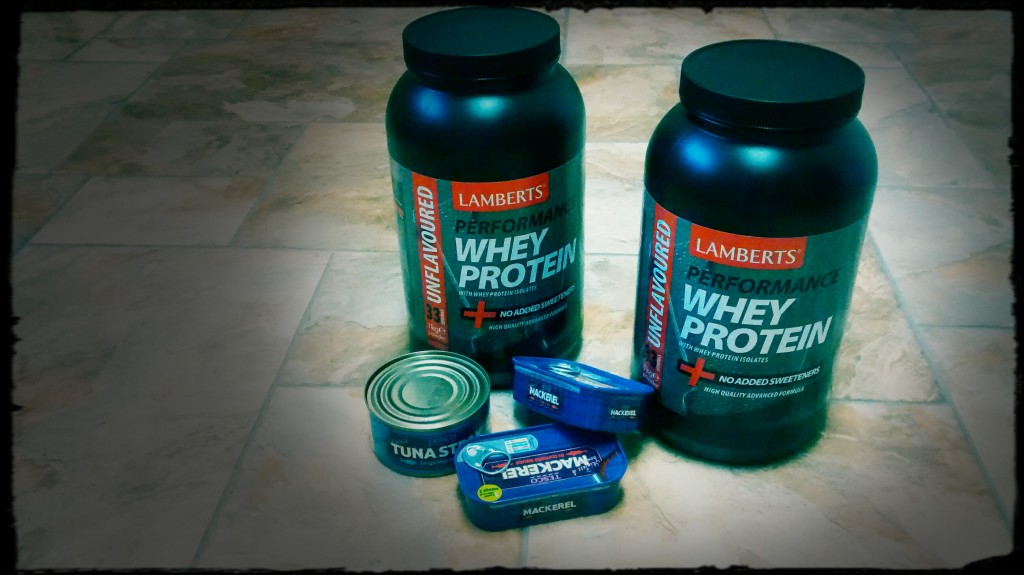
High protein diets improve nitrogen retention and can facilitate muscle hypertrophy if combined with resistance training. This can cause elevations to resting metabolic rate.
It has been ingrained in the psyche of most individuals that to lose weight it is necessary to forcibly restrict energy intake and perform aerobic exercise. Even within the scientific and medical community this viewpoint is widely held as ‘fact’. However, the scientific literature is not supportive of this theory, because long term aerobic exercise and energy restricting diets are of questionable benefit to fat loss. Although counterintuitive, obesity is actually a condition of starvation. Large fat reserves exist, but the body is unable to tap into them in order to produce energy because they are compartmentalised away from oxidation due to metabolic dysfunction. Leptin resistance in the hypothalamus prevents adequate information regarding the extent of the fat reserve reaching the brain and and this ultimately means that to the hypothalamus at least, the fat does not exist. Therefore when energy is restricted or aerobic exercise is performed, the body responds with countermeasures to limit energy expenditure as during starvation.
Attempting to force the issue of weight loss by undertaking aerobic exercise and limiting energy intake is therefore detrimental. Faced with a perceived threat of starvation, the hypothalamus can down regulate the thermic effect of food and the thermic effect of activity to conserve energy. In addition, catabolism of muscle tissue ensues as the carbon skeletons of branched chain amino acids are utilised as as source of energy through the alanine cycle. The net result of such a regimen of forced energy restriction and aerobic exercise is weight loss, a large percentage of which is skeletal muscle. The now permanently lowered resting metabolic rate and the increasingly stimulated appetite make the regain of any lost body fat highly likely over the long term. The loss of skeletal muscle is therefore pivotal in the failure of energy restriction and aerobic exercise to cause weight loss, and preventing this is a necessary step to success. Maintaining a positive nitrogen balance must therefore be a priority in any successful fat loss regimen.
Research has investigated the effects of aerobic exercise and energy restriction and shown that both result in the creation of a negative nitrogen balance. For example, in one study1, researchers measured the urinary nitrogen excretion 12 men and women during a 20 % increase in energy expenditure using low intensity exercise including cycling on a stationary bicycle. Following a wash out period, the authors then measured the urinary nitrogen excretion of the same subjects following a 20 % reduction in energy intake which included 0.57 grams per kg body weight per day protein. During both periods urinary nitrogen excretion increased causing the subjects to enter a state of negative nitrogen balance. There was no significant difference in nitrogen retention between either of the treatments suggesting that both energy restriction and low intensity aerobic exercise cause an internal milieu that could potentially lead to skeletal muscle loss and a reduction in resting metabolic rate through a negative nitrogen balance.
Until insulin and leptin resistance are reversed, the hypothalamus will continue to counteract any reduction in energy with increases in energy efficiency elsewhere. Therefore for fat loss to occur no energy restrictions can be made. Metabolic rate should be stimulated by causing skeletal muscle hypertrophy, and this can only be achieved through creation of a positive nitrogen balance. In particular, a high protein diet that contains no energy restriction in combination with resistance training has been shown to be necessary to improve nitrogen retention and stimulate skeletal muscle growth. In one study for example2, researchers compared the effects of resistance and aerobic exercise on physiological parameters in subjects not undertaking energy restriction. The results showed that resistance training increased lean mass and nitrogen retention and this was reflected by an increase in resting metabolic rate. In contrast skeletal muscle mass and nitrogen retention was reduced by aerobic exercise, and this caused a reduction in metabolic rate.
Therefore the resistance training group had increases in fat free mass and decreases in body fat, whereas the aerobic exercise group lost weight, but this was comprised of both fat and muscle. This supports the contention that aerobic exercise is catabolic and causes a decrease in skeletal muscle. Interestingly, the resistance training group lost fat despite increasing caloric intake showing that fat loss is possible without energy restriction. Strength increased in the resistance training group and decreased in the endurance group as might be expected, suggesting that the decrease in fat free mass had detrimentally impacted the functional strength. While nitrogen retention increased significantly for the resistance training group, this effect was attenuated by the addition of aerobic exercise. Similarly, while aerobic exercise had detrimental body composition changes addition of resistance training attenuated the negative effects. Aerobic exercise and energy restriction are therefore detrimental to fat loss because they create a negative nitrogen balance.
